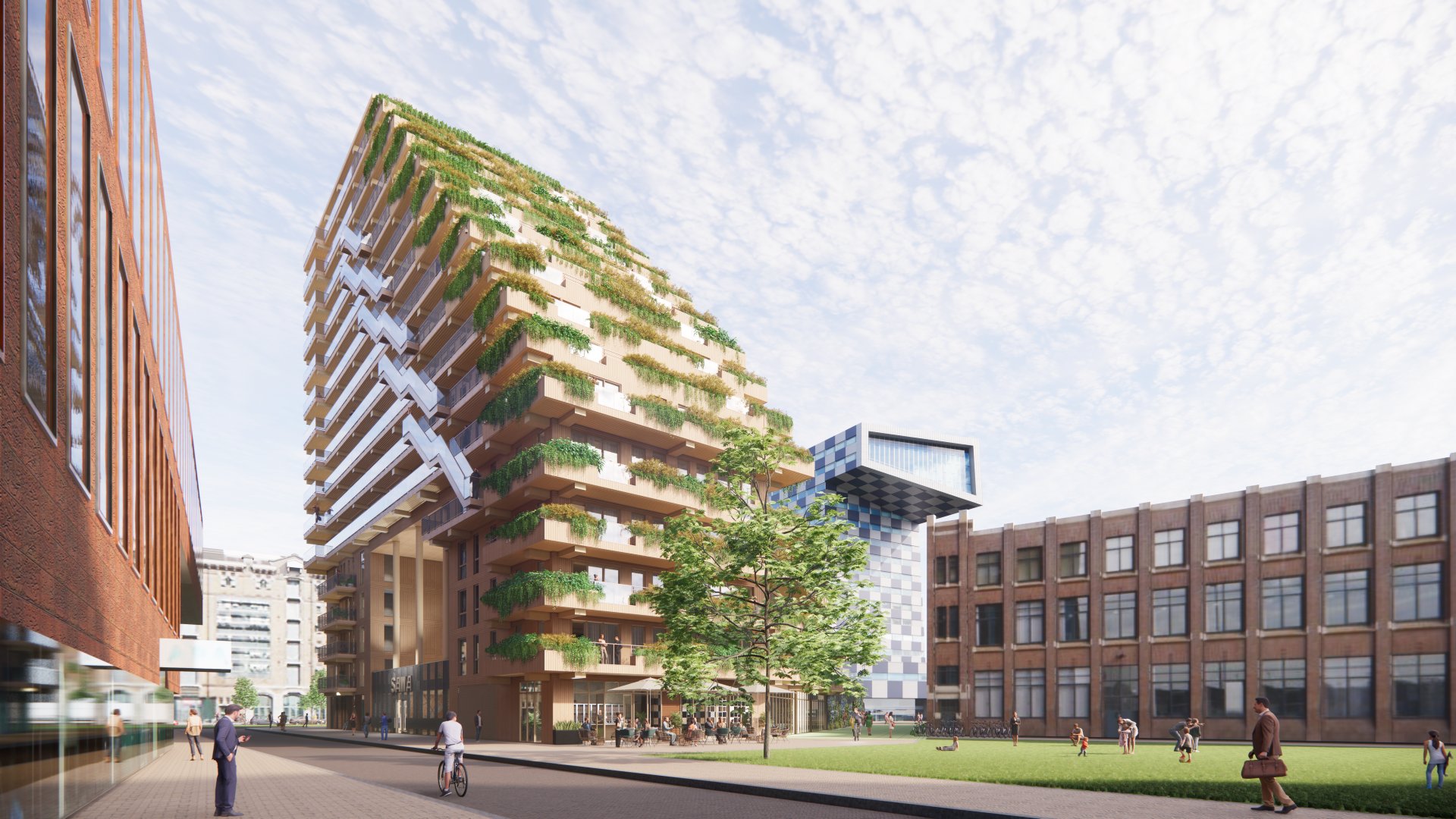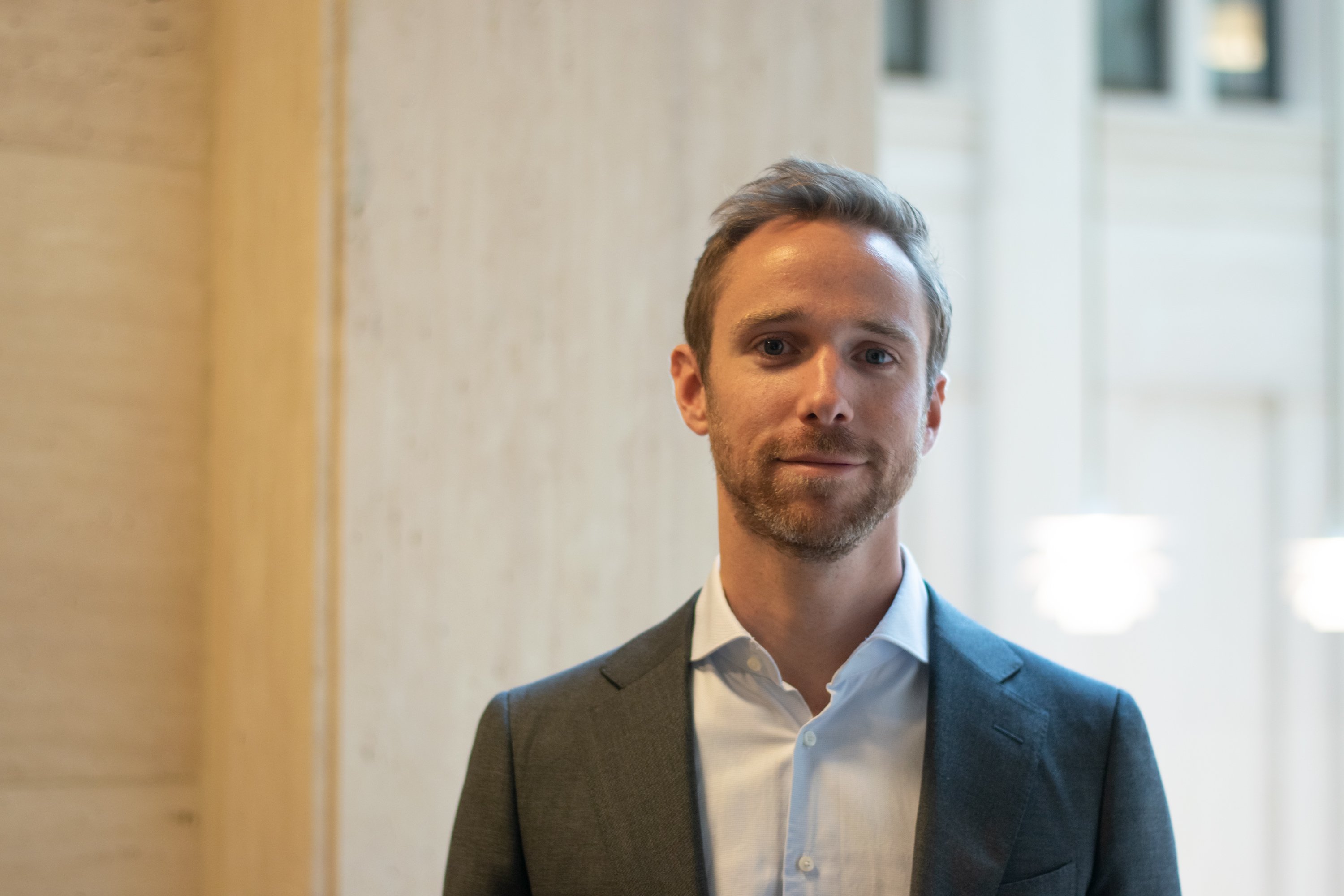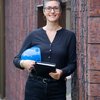Example projects with very good environmental performance
The Municipality of Rotterdam has a Sustainable Area Development team.

Quickscan gives developers fast insight
In May 2024, the Municipality of Rotterdam—together with market parties and housing associations—launched the Plan van Aanpak Duurzaam Doorbouwen (Sustainable Continued Construction Action Plan). It is a plan unique to the Netherlands, aiming to accelerate joint learning on how to combine sustainability goals with the country’s major construction challenge. “In the Netherlands, we face a massive construction task, so we must find ways to continue building without crossing planetary boundaries. We can only do that through strong collaboration,” says Tom van Haaren, Program Manager for Sustainable Area Development.
The Municipality of Rotterdam has had a Sustainable Area Development team with fifteen employees for five years. Tom explains: “We advise on development projects. Our work is integrated and spans all sustainability themes: energy transition, circularity, biodiversity, climate adaptation, sustainable mobility, and a healthy living environment. We translate policies on these six themes into practical implications for local projects. So, if the municipal executive board sets a target to add, say, 20 hectares of green space to the city, we help interpret what that means for an individual project.”
600 projects per year
In its first three years, the team focused on designers and project managers. “We started by sharing knowledge through presentations for urban designers and project leaders, so they would clearly understand what our work involves.”
Today, for large development and transformation projects, a sustainability advisor from Tom’s team is part of the project team, which also includes a project manager, a land development advisor, and an urban planner. “We provide advice on all six sustainability themes, rather than assigning a separate advisor for each theme. This speeds up the process and enables an integrated consideration of sustainability.”
On average, a sustainability advisor is involved in about 100 of Rotterdam’s roughly 600 development projects each year. “Additionally, we provide tools and knowledge-sharing resources to support projects even when we’re not directly involved as advisors.”
Unique Quickscan with sustainability requirements per area
One of the tools that developers, architects, and builders can use—especially for projects where the Sustainable Area Development team is not directly involved—is the Quickscan Sustainability Rotterdam. Initially developed for internal use, the tool is now also utilized by market parties.
“As a municipality, we have access to a wealth of sustainability-related data, such as urban heat stress, water nuisance, and biodiversity. Developers can use the scan to quickly identify key sustainability issues in the area they want to develop.”
The scan provides information across the entire city of Rotterdam. “It took a lot of time to develop. We originally started with complex Excel models and later brought in a software specialist to make the data more accessible. It’s truly a Rotterdam-based scan, and we’re proud of it. Other municipalities and provinces regularly express interest in it.”
The scan is used intensively—about 150 times per year on average.
Sustainable Continued Construction Action Plan
The Sustainable Continued Construction Action Plan (Plan van Aanpak Duurzaam Doorbouwen) is one of the outcomes of the collaboration that Rotterdam has maintained since mid-2023 with developers, housing associations, investors, municipalities, and other public organizations.
“Together, we are working on sustainable and affordable housing for all residents of Rotterdam, with special attention for low-income households.” This collaboration makes use of the Paris Proof methodology* and the EU Taxonomy*—frameworks developed to help achieve the European climate targets for 2050.
The CSRD (Corporate Sustainability Reporting Directive) and SFDR (Sustainable Finance Disclosure Regulation) are components of the EU Taxonomy and are already mandatory for large companies and financial institutions. A broader rollout will follow in the coming years.
“As partners, we aim to learn collectively—for example, by calculating the impact of projects to assess which aspects are not yet Paris Proof or do not yet meet the EU Taxonomy criteria. We are doing this, for instance, in the development of Schiehaven-Noord, a large area where between 500 and 700 homes will be built.”
The Role of Sustainability Standards in Tendering
In area development tenders, the Municipality of Rotterdam formulates requirements as quantitatively as possible. “For example, by stating that a project must outperform the mandatory BENG 2 standard by at least 20%. For biodiversity, circularity, and water retention/climate adaptation, we align with established methods such as GPR and BREEAM. Developers can earn bonus points if they go above and beyond—for instance, by implementing additional renewable energy solutions. By placing extra focus on sustainability, you increase your chances of winning the tender.”
For each area, the municipality sets specific sustainability ambitions. “That is the task of our team of advisors. They assess the area's characteristics. If there's a high risk of flooding, we focus on climate adaptation. If the area has fewer specific qualities, we may prioritize broader themes like circularity, which are less location-dependent.”
Stricter MPG Than Legally Required
When a sustainability advisor is involved in a project, they aim for a specific MPG score. “We often target a better score than the legally required maximum MPG. Together with developers, we can establish the desired MPG in a private-law, and therefore binding, agreement. This applies in cases where we have no or only limited land ownership. If we do have full land ownership, we have more influence. In tenders, we often include a more favorable MPG as one of the criteria.”
Which Materials Help Achieve a Better MPG?
Tom and his colleagues regularly engage in discussions about which materials can be used to achieve the desired score. “If a new construction material is still classified as category 3 in the NMD and receives, for example, a +20 percent CO₂ emissions mark-up, we may initiate a dialogue with the developer about that specific material. And if we know that it’s a solid construction material—one that will eventually be included in the database—we’re willing to accept a slightly higher MPG, provided it still stays below the legal requirement.”
Sometimes, it becomes apparent during the design phase that certain ambitions or preferences are in conflict. “This might happen, for instance, when an urban planner’s design calls for a specific material that performs poorly in terms of environmental impact. In such cases, we work together to find alternatives that still align with our sustainability goals.”
The municipality supports the importance of the NMD. “We believe it’s essential to have a reliable database as the foundation for achieving our sustainability objectives.”

*The Paris Agreement and Paris Proof Construction
In the Paris Climate Agreement, the European Union set the ambition of limiting global warming to a maximum of 2 degrees Celsius. To achieve this, energy consumption in buildings must be reduced, and we must lower our CO₂ emissions. Paris Proof construction is, in short, a means to help reach that ambition. A Paris Proof building is highly energy-efficient (thanks to insulation and technical installations), has very low energy consumption, and generates that energy locally and sustainably. Circular and sustainable materials are used during construction.
**EU Taxonomy
The EU Taxonomy is a classification system developed by the European Union. It identifies which economic activities are considered sustainable. The goal is to encourage companies and financial institutions to invest in activities that contribute to achieving environmental objectives.
With the taxonomy, investors, companies, and governments can demonstrate that they are contributing to a green economy—focusing on areas such as circularity, biodiversity, pollution reduction, and overall sustainability.
The Municipality of Rotterdam focuses not only on sustainable area development, but also on sustainable real estate
Below are a few examples:
SAWA: A timber residential complex with both owner-occupied and rental units, plus a commercial space, located in Delfshaven. Construction has started. Architect: Mei architects and planners; Developer: NICE developers.
Grondstoffenstation at Afrikaanderplein: A circular building constructed using reused materials, such as water barrels.
Olympia College in IJsselmonde: Renovated in early 2024. Its iconic front façade has been preserved by adding an extra interior wall, significantly improving the indoor climate.
